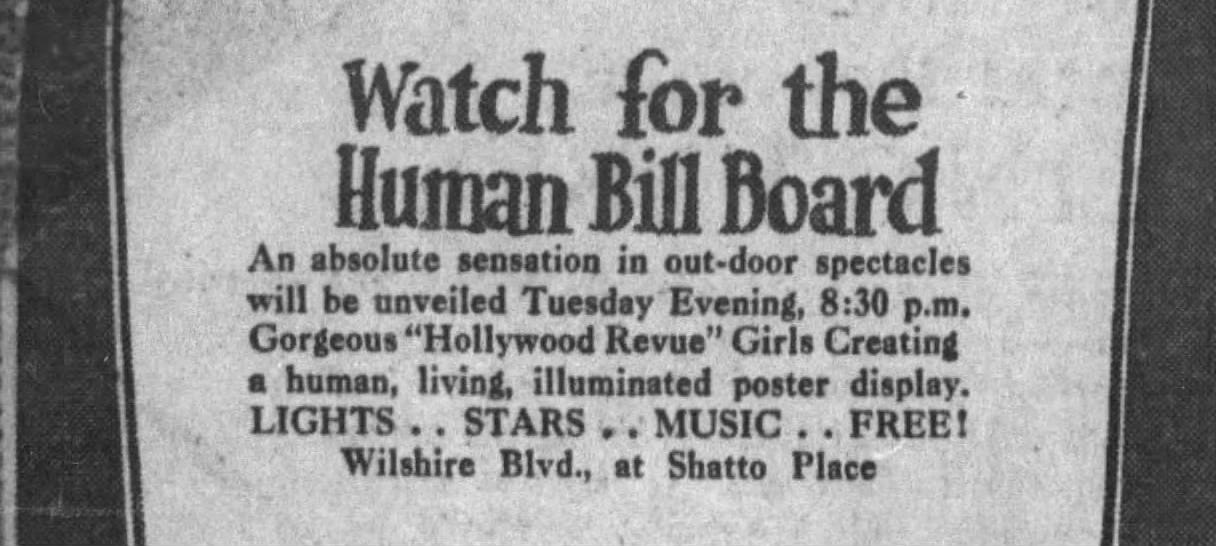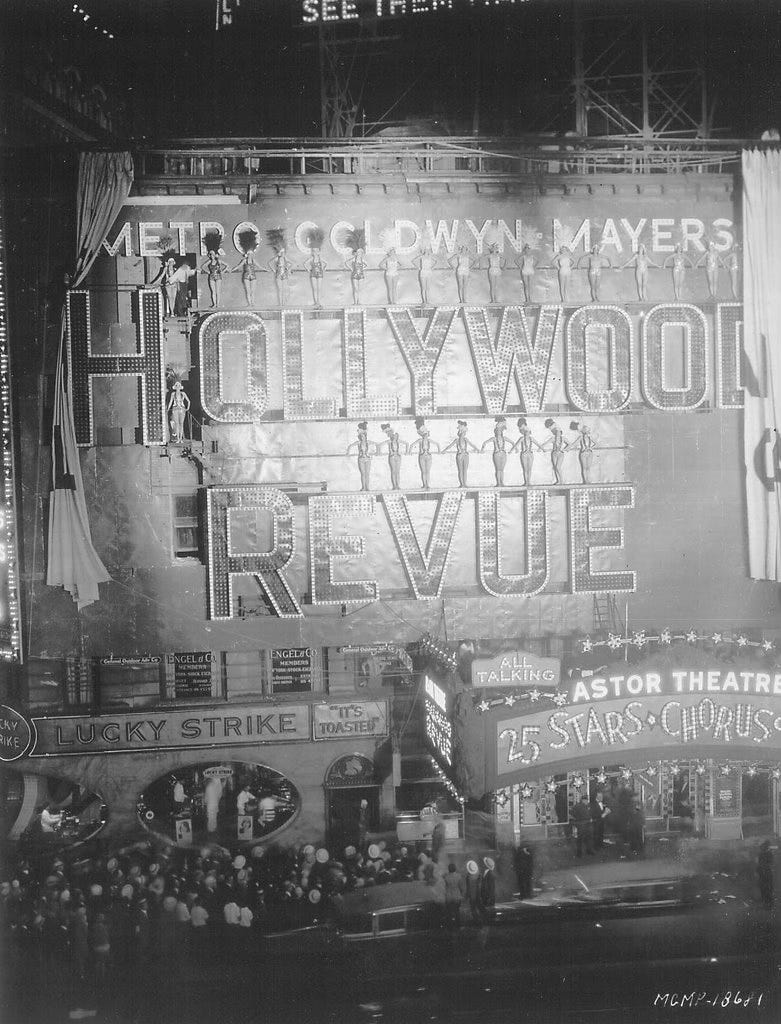Film marketing in the 1920s and 30s was an era of grand spectacle that capitalized on the massive signage space outside the nation's largest and most opulent movie palaces. These theaters, often architectural marvels themselves, featured movie marquees that could stretch over 50 feet high. Adorned with flashing lights and larger-than-life recreations of the era’s biggest stars, these signs were a visual feast. Outlined in neon or framed by massive incandescent bulbs, they illuminated the night, enticing the public into a world of romance, drama, thrills, fantasy, and escapism—all for the price of a movie ticket.
One of the most audacious film promotion stunts of this golden age was undertaken by MGM studios for their film The Hollywood Revue of 1929. Following the immense success of The Broadway Melody of 1929, the studio produced The Hollywood Revue another splashy musical. This one was a singing and dancing showcase, an all-star revue featuring a vaudeville-style array of acts, headlined by stars like Marion Davies, Bessie Love, Lon Chaney, Norma Shearer, Lionel Barrymore, Joan Crawford, and Conrad Nagel.
As an early sound film, The Hollywood Revue was a novelty that thrilled audiences, who delighted in seeing their favorite Metro stars perform skits and musical numbers in this “all singing, all dancing musical extravaganza.” The film was a testament to the burgeoning possibilities of synchronized sound in cinema, capturing the public’s imagination.
For the film’s dual premieres at Grauman’s Chinese Theater in Los Angeles and New York’s Astor Theater, MGM devised a spectacular marketing gimmick: the human poster. This involved a fifty-foot square illuminated sign with the film’s title spelled out in massive letters, each letter topped by a chorus girl.
A newspaper ad proclaimed it to be “an absolute sensation in outdoor spectacle,” featuring “gorgeous ‘Hollywood Revue’ girls creating a human, living, illuminated poster display.”
The “human poster” was first erected on Wilshire Boulevard at Shatto Place, where it reportedly stopped traffic as 10,000 people gathered to gawk at the sight as the girls with musical accompaniment, “executed dances and rhythmic interpretations.”
When the film premiered in New York City at the Astor Theater, the chorus girls were once again perched precariously atop the lighted letters (this time double the size), seemingly without any safety gear beyond the handrail behind them, creating a thrilling display above the busy streets below.
You’ll be glad to know, no chorus girls were harmed in the execution of these stunts.
Also, as you may have suspected, these daring displays marked the first and last time such human posters were used in film promotion.
and finally. . .
Cinema Cities is a one woman show written, produced, edited, researched, designed all by me, Sydney. If you’re loving this content please consider supporting Cinema Cities by becoming a paid member of this substack (you get cool extra stuff) or clicking here and joining my Patreon⭐️ (same cool extra stuff as the paid substack)
You can find a list of essential Cinema Cities books and movies here: Cinema Cities Favorites
Check out my YouTube channel here
🎵Like the music featured in the videos on the YouTube channel?
you can find a playlist with the music I've used here: CINEMA CITIES PLAYLIST
(And, if you sign up to Epidemic Sound through the playlist link, you'll get 1 month for free!)
I hang out on Twitter so come on over and say hi!
Email: CinemaCities1978@gmail.com
Disclosure: I may receive a commission or referral bonuses for purchases or sign-ups made through my links. I am a participant in multiple affiliate and referral programs, including Amazon and Epidemic Sound.












Did MGM consider the liability cost of having to face action against it if somebody got injured or killed? They probably did, but it was still a big risk.
They almost seem like the ancestors of football team cheerleaders (though they usually do their routines safely on the ground).